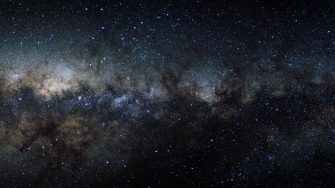- UNSW
- ...
- Our schools
- Physics
- Our research
- Our projects
- Dennis Stello's research project
- Home
- About us
- Study with us
- Student life & resources
-
Our research
- Centres of excellence
-
Our projects
- Adam Micholich's research project
- Alex Hamilton's research project
- Ben Montet's research project
- Caroline Foster's research projects
- Chris Tinney's research project
- Christine Lindstrom's research project
- Clemens Ulrich's research projects
- Dane Mccamey's research project
- Dennis Stello's research project
- Dimi Culcer's research projects
- Jan Hamann's research project
- Joe Wolfe's research project
- Julian Berengut's research project
- Kate Jackson's research project
- Kim Vy Tran's research project
- Liz Angstmann's research project
- Maja Cassidy's research projects
- Maria Cunningham's research project
- Michael Ashley's research project
- Michael Schmidt's research project
- Michelle Simmon's research project
- Oleg Sushkov's research project
- Oleg Tretiakov's research project
- Paul Curmis' research project
- Peter Reece's research project
- Rajib Rahman's research project
- Richard Morris's research project
- Sarah Brough's research project
- Sarah Martell's research project
- Steven Sherwood's research project
- Susan Coppersmith's research project
- Sven Rogge's research project
- Victor Flambaum's research project
- Yvonne Wong's research project
- Nichole Barry's research project
- Research areas
- Engage with us
- News & events
- Contact us
- Home
- About us
- Study with us
- Student life & resources
-
Our research
Our projects
- Adam Micholich's research project
- Alex Hamilton's research project
- Ben Montet's research project
- Caroline Foster's research projects
- Chris Tinney's research project
- Christine Lindstrom's research project
- Clemens Ulrich's research projects
- Dane Mccamey's research project
- Dennis Stello's research project
- Dimi Culcer's research projects
- Jan Hamann's research project
- Joe Wolfe's research project
- Julian Berengut's research project
- Kate Jackson's research project
- Kim Vy Tran's research project
- Liz Angstmann's research project
- Maja Cassidy's research projects
- Maria Cunningham's research project
- Michael Ashley's research project
- Michael Schmidt's research project
- Michelle Simmon's research project
- Oleg Sushkov's research project
- Oleg Tretiakov's research project
- Paul Curmis' research project
- Peter Reece's research project
- Rajib Rahman's research project
- Richard Morris's research project
- Sarah Brough's research project
- Sarah Martell's research project
- Steven Sherwood's research project
- Susan Coppersmith's research project
- Sven Rogge's research project
- Victor Flambaum's research project
- Yvonne Wong's research project
- Nichole Barry's research project
- Engage with us
- News & events
- Contact us

Sounding stars using data from NASA's Kepler and TESS missions
Project ID: 127
Supervisor(s): Dennis Stello, opens in a new window
NASA's Kepler mission has provided a legacy data set for the study of stars and their planets. Kepler's high precision measurements reveals stellar brightness variations caused by oscillations of standing sound waves inside the stars. Just like the sound of a violin and a bass are different due to their different size, the Stellar Oscillations Group led by Dennis Stello uses observed frequencies of stellar oscillations to determine the sizes and masses of stars and what they are made of. Using this technique -- called asteroseismology -- is currently revolutionizing stellar astrophysics.
For a brief overview on asteroseismology and the work by the Stellar Oscillations Group see: http://www.physics.usyd.edu.au/~stello/astronomy.html, opens in a new window

Projects currently up for grabs involve data analysis of Kepler, K2, and TESS data to measure stellar oscillations in thousands of stars. In addition to Kepler, NASA's K2 and TESS missions are, and will be, providing more big data sets at a high pace. This involves creating new artificial intelligence-based algorithms to analyse the large data sets we constantly receive from NASA. The observed stars cover large parts of the Milky Way enabling us to probe the structure and evolution of our Galaxy, known as Galactic Archaeology, a hot topic in astrophysics. Some of the stars are in 'open clusters' for which applying asteroseismology has only just become possible. Cluster stars are born together from a big cloud of gas, and therefore share a common age and composition, which greatly enhances our potential to test contemporary stellar evolution theory. Applying asteroseismology to these stars, brings this potential to a new level. For this work, we also use state-of-the-art stellar evolution modeling to directly compare theory with data, and to search for new ways of probing the interior structure of stars.
Below: The Kepler Field of View (image credit: NASA, Kepler Team)

